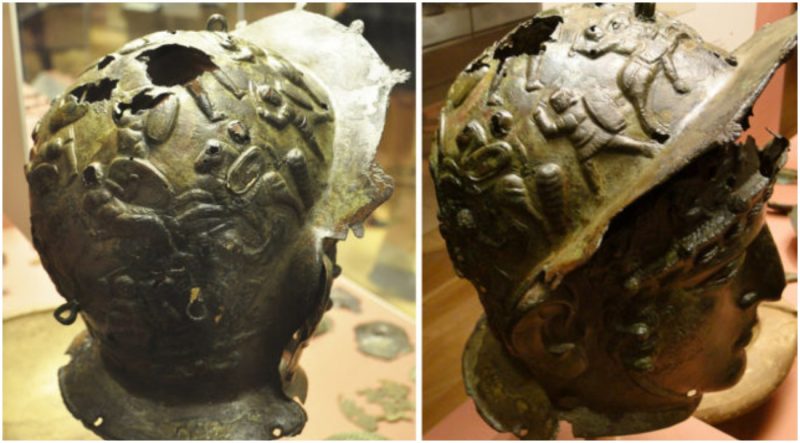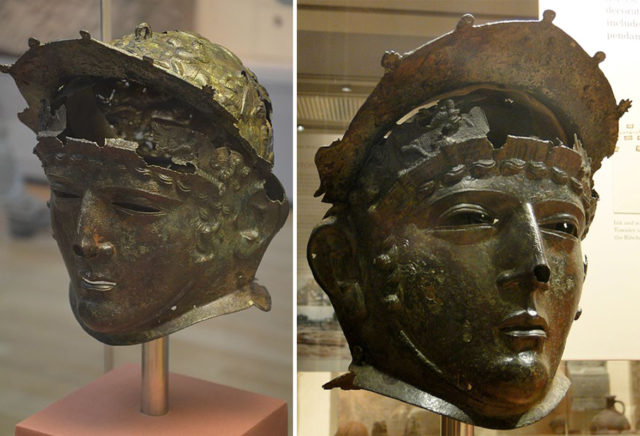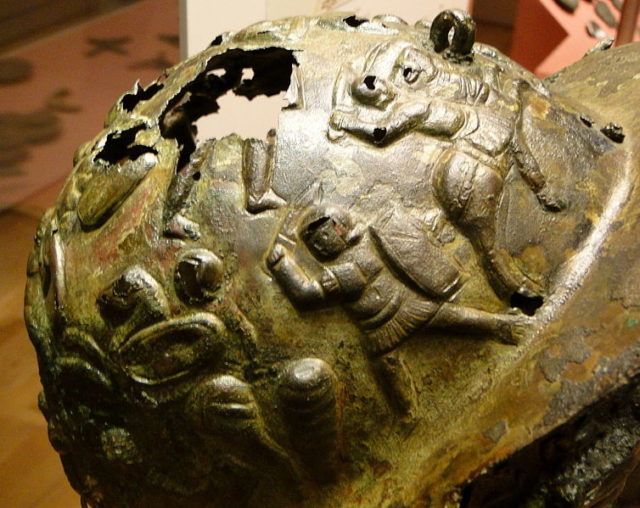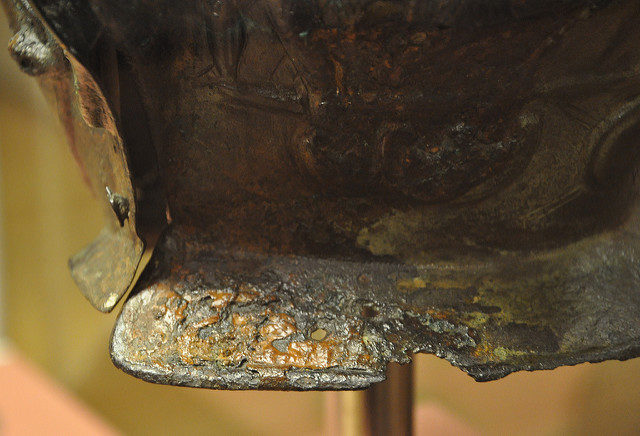England, a land rich in archaeological wonders and historical treasures, boasts a plethora of sites that unravel the mysteries of its past. One such hidden gem lies in the county of Lancashire – Ribchester, a site of a Roman fort and settlement that holds within its grounds the remarkable Ribchester Helmet. What makes this discovery even more intriguing is the fact that it was stumbled upon by a non-professional, a 13-year-old clog maker’s son, purely by accident in 1796.

The Ribchester Helmet, now considered one of the most famous helmets from Ancient Rome, was part of a small hoard of metal items dating back to approximately 120 AD. The young boy, playing behind his father’s house in Ribchester, uncovered this historical treasure that would later capture the fascination of archaeologists and history enthusiasts alike.
This two-piece ceremonial helmet, weighing nearly three pounds, was worn by Roman cavalrymen during military exercises, parades, and various ceremonies. Although of little practical use on the battlefield, it played a significant role in marking ranks and excellence in horsemanship during the cavalry sports events known as “hippika gymnasia.”
The Romans, having landed on the shores of Britain in 43 AD, left an indelible mark on the island’s culture, language, geography, and architecture. The Ribchester Roman Fort, known as Bremetennacum Veteranorum, was constructed during the reign of Emperor Vespasian in the early 70s AD. The fort, along with the Roman bathhouse, stands as a testament to Roman influence in the region.

Discovered in the summer of 1796 by the son of Joseph Walton who was playing behind his father’s house in Ribchester, Lancashire. Author: Carole Raddato – CC BY-SA 2.0 / Author: Rex Harris – CC BY-SA 2.0
Our knowledge of this type of Roman helmet is primarily derived from the accounts left by Arrian of Nicomedia, a provincial governor and close friend of Emperor Hadrian. His work, Techne Taktike, sheds light on the use of such helmets in cavalry tournaments, providing insight into the practices of Roman soldiers.

Only three Roman helmets with a covering over the face have been found in the UK. Author: Rex Harris – CC BY-SA 2.0
Remarkably, only three Roman helmets with a covering over the face have been discovered in the UK, and the Ribchester Helmet is considered the highest quality example among them. The second, found around 1905, is housed at the Museum of Antiquities in Edinburgh, while the third, known as the Crosby Garrett Helmet, was discovered in 2010 and sold at auction for a staggering $3.6 million.

Since 1814, the original helmet is on display at the British Museum, but the Roman Museum in Ribchester has a replica. Author: Helen Simonsson – CC BY-SA 2.0
Since 1814, the original Ribchester Helmet has been on display at the British Museum, allowing visitors to marvel at its craftsmanship and historical significance. For those unable to make the journey to London, the Roman Museum in Ribchester offers a replica of this iconic artifact, providing a glimpse into the rich history of the region.
The chance discovery of the Ribchester Helmet serves as a testament to the unpredictable nature of archaeological finds. It reminds us that sometimes, the most extraordinary artifacts are unearthed not by seasoned professionals but by curious individuals who stumble upon history while simply playing behind their homes. The Ribchester Helmet stands as a symbol of Roman glory, a relic from the past that continues to captivate and educate generations about the enduring legacy of Ancient Rome in the heart of England.